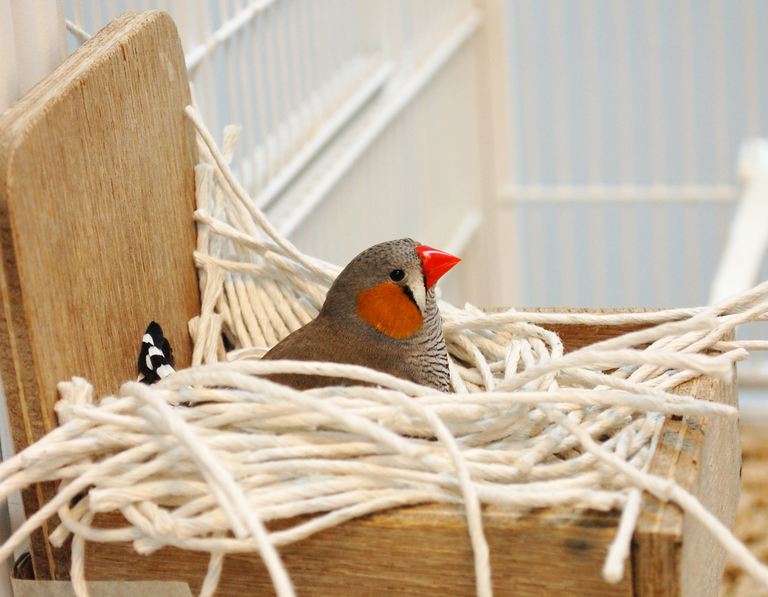Reproductive Consequences of Material Use in Avian Nest Construction
Birds’ nests represent a rich behavioural ‘fingerprint’, comprising several important decisions—not the least of which is the selection of appropriate material.

Birds’ nests represent a rich behavioural ‘fingerprint’, comprising several important decisions—not the least of which is the selection of appropriate material. Material selection in nest-building birds is thought to reflect, in part, builder-birds’ use of the ‘best’ material—in terms of physical properties (e.g., rigidity)—refined across generations. There is, however, little experimental evidence to link the physical properties of nest material to both birds’ nest-building and breeding performance. We examined individual-level material-use consequences for breeding zebra finches by manipulating the kind of material available to laboratory-housed pairs: stiff or flexible same-length string. We show that higher fledgling numbers were related to: (i) fewer pieces used in nest construction by stiff-string builders; and conversely, (ii) more pieces used in nest construction by flexible-string builders. Together, these data suggest that physical differences in nest material can affect avian reproduction (here, the trade-off between nest-construction investment and fledgling success), highlighting the adaptive significance of nest-building birds’ material selectivity.
Publication: Alexis J. Breen, et al., Reproductive consequences of material use in avian nest construction, Behavioural Processes (2023). DOI: 10.1016/j.beproc.2021.104507
Original Story Source: Max Planck Institute for Evolutionary Anthropology

 Alerts Sign-up
Alerts Sign-up